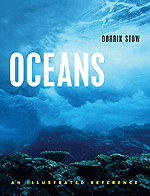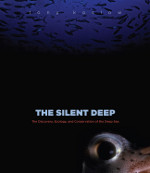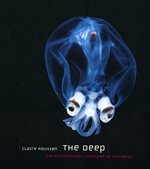Go deeper than Google
 In this morning’s story about the new version of Google Earth, which for the first time lets users explore Earth’s oceans, the New York Times notes that “organizations seeking to reconnect people directly with nature expressed guarded optimism when the new features of Google Earth were described.”
In this morning’s story about the new version of Google Earth, which for the first time lets users explore Earth’s oceans, the New York Times notes that “organizations seeking to reconnect people directly with nature expressed guarded optimism when the new features of Google Earth were described.”
“Electronic images can boost awareness and sometimes even inspire, but there’s no substitute for direct experience in nature,” Cheryl Charles, president of Children and Nature Network, told the paper. “Hopefully those exploring Google’s virtual oceans, especially children, can still find the time to get wet, as well.”
While it’s too cold in many parts of the world to make that a pleasant prospect, we have what is perhaps the next-best thing: beautiful books on the oceans and marine life that—long before Google Earth—literally put in our hands a new view of ocean depths around the globe, giving us a glimpse of worlds rarely seen.
With hundreds of beautiful full-color photographs and explanatory diagrams, charts, and maps, Dorrik Stow’s Oceans combines the visual splendor of ocean life with up-to-date scientific information to provide an invaluable and fascinating resource on this vital realm.
 Tony Koslow’s The Silent Deep, meanwhile, tells the story of the exploration and discovery of the deep sea, the ecology of its diverse environments, and the impact of humans, highlighting the importance of global stewardship in keeping this delicate ecosystem alive and well.
Tony Koslow’s The Silent Deep, meanwhile, tells the story of the exploration and discovery of the deep sea, the ecology of its diverse environments, and the impact of humans, highlighting the importance of global stewardship in keeping this delicate ecosystem alive and well.
 And, of course, we couldn’t talk about this topic without mentioning Claire Nouvian’s The Deep, which features more than two hundred color photographs of terrifying sea monsters, living fossils, and ethereal bioluminescent creatures, some photographed for the very first time. Though turning the book’s glossy pages to reveal each new creature is an experience we wouldn’t want you to miss, these electronic images are pretty cool, too.
And, of course, we couldn’t talk about this topic without mentioning Claire Nouvian’s The Deep, which features more than two hundred color photographs of terrifying sea monsters, living fossils, and ethereal bioluminescent creatures, some photographed for the very first time. Though turning the book’s glossy pages to reveal each new creature is an experience we wouldn’t want you to miss, these electronic images are pretty cool, too.